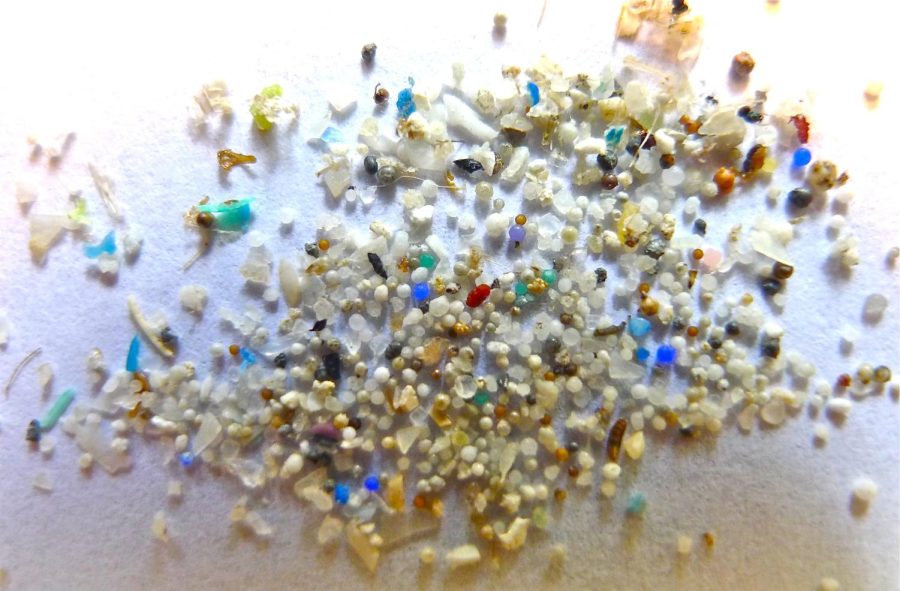The What, Where, How, and Why of Microplastics
When was the last time you ate plastic? Maybe once a few years ago, when you swallowed a lego, right? Or a couple weeks ago when you ate some of the wrapper of a candybar. Well, you actually likely ate some plastic today, or at least within the last few days. In fact, a human consumes an average of one lego brick of plastic a week! This is because we are always consuming microplastics, or small pieces of plastic less than 5mm in diameter. Microplastics are manufactured, such as glitter, or are the result of plastic breaking down. As pollution grows, microplastics are becoming a huge concern for the environment and even human health. They are being found everywhere and in everything; from the deepest depths of the sea, to the tallest mountains and all the foods we eat.
In general, microplastics’ danger comes from their inability to decompose, the potentially toxic materials that compose them, and their size. When consumed by animals, microplastics (and regular plastics) can eventually lead to a toxic build up because they can’t be properly digested or decomposed. They accumulate dangerously in the digestive system, where they slowly take up space and block the absorption of real food. The phenomenon is not new. 20 years ago, researchers in Scotland could not find a single fulmar seabird without plastic in its stomach. Today, the problem persists. Whales are found all washed up on beaches all over the world, such as in the Philippines and Scotland, having starved to death because they had tens or even hundreds of pounds of plastic in their stomachs that prevented them from eating/digesting real food.
The size of microplastics is the main contributor towards their widespread nature. Larger plastics can be detected and avoided, but microplastics are small enough such that humans and wildlife frequently drink, eat, and even breathe them in unknowingly. For example, around 99% of fish eaten by humans have at least a few microplastic particles.
Recently, in April, a study spearheaded by Castle Hill Hospital’s Department of Cardiothoracic Surgery detected microplastics in every part of the human lung tested, especially in the lower lung. Furthermore, in March, a study conducted primarily by the Faculty of Science in the Netherlands found that microplastics, specifically polymer particles, were found in the bloodstreams of 80% of the participants tested. Through this, the microplastics can travel around the body and get stuck and congregate in organs. Their effect on human health is still being investigated, though it’s likely the chemicals involved are damaging. It is through these types of studies that scientists are demonstrating how plastic has infiltrated us and the world on an incredibly deep level through microplastics.
Microplastics themselves can be avoided to a very small extent by using biodegradable alternatives, such as biodegradable glitter instead of regular plastic glitter. The main issue is that our society has a very deeply ingrained reliance on plastic, and the mere presence of plastic generates microplastics as it is broken down. For example, plastic baby bottles are extremely common, but almost no one knows that babies fed with plastic baby bottles consume millions of microplastics a day, and their feces contain amounts 10 times that of adults. Microplastics are relatively unavoidable so long as plastic production continues at the rate it is, which is unfortunately expected to double by 2040. For now, we can only leave it to the scientists to research and develop methods to detect microplastics and determine their consequences while we hope for plastic production and pollution to decrease.
If you want to help, though, the best thing to do is to try to reduce your plastic use as a whole. You can buy reusable plastic alternatives for things that are commonly plastic, such as reusable canvas bags instead of plastic grocery bags, and non-plastic reusable water bottles instead of single-use plastic ones. Packing foods from home in reusable lunch boxes or snack bags is also helpful in preventing the need to buy heavily plastic-packaged snacks/foods, which both reduces your plastic waste and prevents you from consuming so many microplastics! In general, there are tons of reusable and non-plastic alternatives that can be found online for almost every purpose, which makes transitioning to an eco-friendly lifestyle simple. You’ll probably even find that the non-plastic alternatives are often better than their plastic counterparts; I definitely have! And lastly, it’s important to remember that everyone has an impact, no matter how small, and that even small changes are better than nothing.

